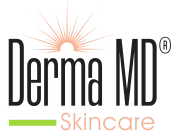Peptides
Peptides and Skincare:
Ageing is a basic biological process seen in all living creatures, is not preventable. Surgical and topical modalities have been invented and substances were applied topically to alter the ageing process. Peptides and proteins, frequently used for this purpose, were categorized into four groups: signal peptides, enzyme-inhibitor peptides, neurotransmitter-inhibitor peptides and carrier peptides. We comprehensively review eligible studies -including controlled ex vivo or in vivo efficacy studies on any topical peptide or protein that has been administered to treat signs and symptoms of ageing.
Introduction
In the year 2000, individuals over the age of 65 represented 13% of the United States population; this is expected to increase to 20% by 2030. This preponderance of older individuals over younger ones will transform the shape of the age distribution graph into a rectangle rather than the current pyramid observed [1].
This demographic shift calls for increased efforts to prevent the ageing process and develop safe and effective drugs for the elderly. In cosmetic dermatology, experts are exploring better anti-solar, anti-ageing, anti-wrinkle and firming products. Peptides have different effects on the skin especially for cosmetics purposes, but one important hurdle to use them topically is their permeability to penetrate skin
Signal peptides stimulate matrix protein production in general and collagen synthesis in specific. They may be accomplished by stimulation and growth of different skin cells like human skin fibroblasts. Signal peptides can also increase elastin, proteoglycan, glycosaminoglycans and fibronectin proliferation. By increasing matrix cell activities and consequently collagen production, the skin looks firmer and younger.
The tripeptide-1 (glycyl-l-histidyl-l-lysine or GHK) is primarily known as carrier peptides.
Tripeptide-1 can be also conjugated with palmitic acid and form pal-tripeptide-1 (Biopeptide-CL). In vitro and in vivo studies approved that Biopeptide-CL stimulates collagen and gylcosaminoglycans synthesis [39].
Palmitoyl tripeptide-3/5 (Syn®-Coll; Pentapharm, Basel, Switzerland) is a synthetic signal peptide. Thrombospondin I is a protein that binds to tissue growth factor beta (TGF-β) and makes it biologically inactive. Syn®-Coll mimics thrombospondin I tripeptide sequence to activate TGF-β. Therefore, it promotes collagen formation via TGF-β (Pentapharm). In a controlled trial, 60 healthy volunteers received 2.5% Syn®-Coll cream vs. 10% palmitoyl pentapeptide-3 cream vs. placebo cream twice daily for 84 days. Syn®-Coll significantly decreased average and maximum relief by −22 and −36 μm respectively; when compared with pal-pentapeptide-3, it showed better significant results for Ra, Rz and Rt parameters (Pentapharm).
Pal-KTTKS (palmitoyl pentapeptide-4), a synthetic signal peptide from pro-collagen I fragment, stimulates collagen I, III and VI and also fibronectin, elastin and glycosaminoglycan production [38] and has been frequently used as topical anti-ageing or anti-wrinkle agents. In a study [20] on 93 Caucasian female volunteers, Pal-KTTKS had significantly better scores than placebo for expert grader assessment and subject self-assessment of age hyperpigmented spots. Osborne et al. [22] showed a robust result for this peptide in reducing bumpy texture and fine wrinkles compared with other baseline and comparators.
REFERENCE: F. Gorouhi, H. I. Maibach
